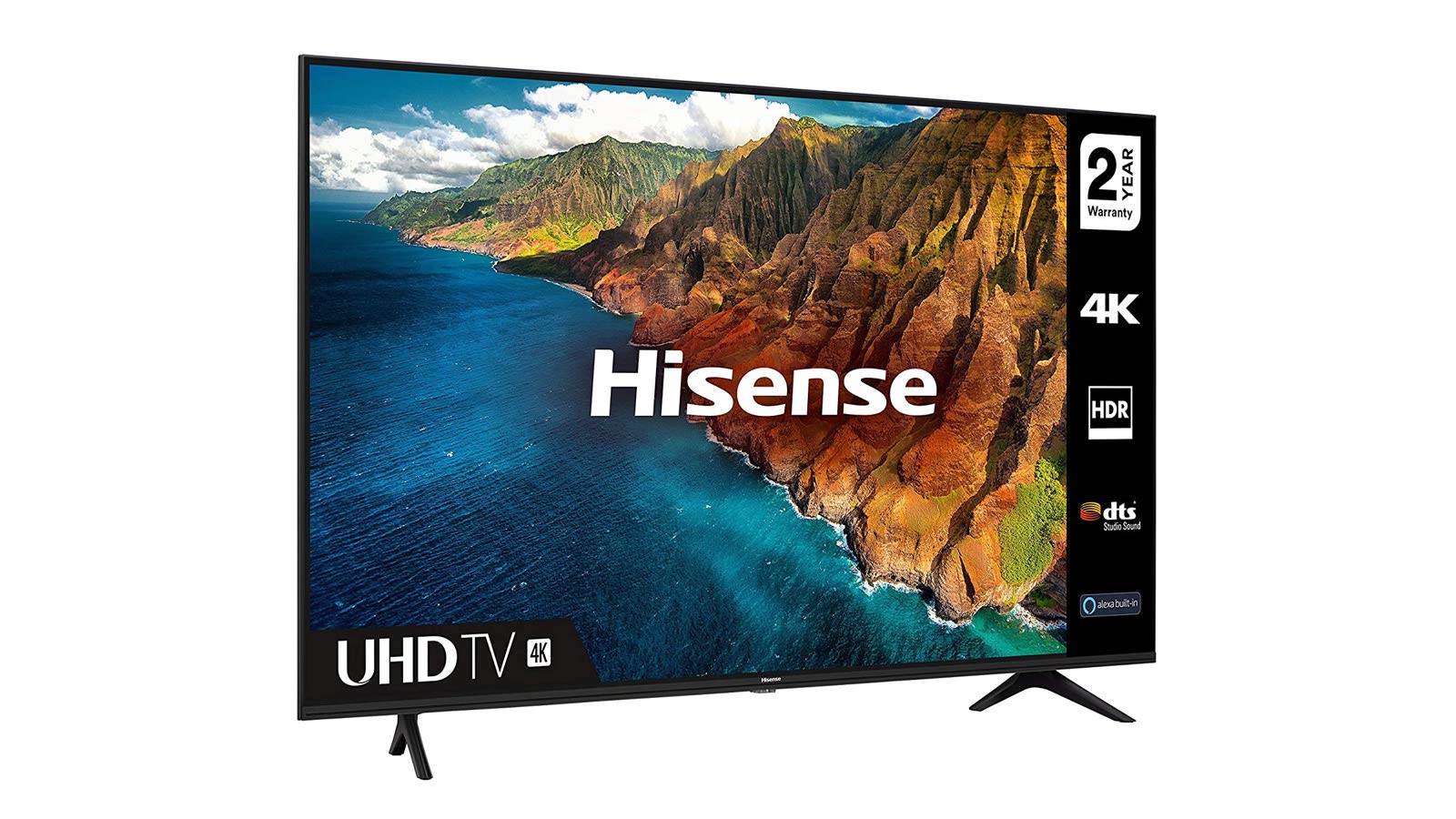Home>Technology>Home Entertainment Systems>Who Owns Television Stations


Home Entertainment Systems
Who Owns Television Stations
Modified: January 6, 2024
Discover who owns television stations and how they impact home entertainment systems. Explore the ownership landscape and its influence on your viewing experience.
(Many of the links in this article redirect to a specific reviewed product. Your purchase of these products through affiliate links helps to generate commission for Storables.com, at no extra cost. Learn more)
**
Introduction
**
Television stations have long been influential in shaping public opinion, entertaining audiences, and disseminating news and information. The ownership of these stations plays a pivotal role in determining the content that reaches viewers' screens. Understanding the history, current ownership landscape, regulations, and impact of ownership on television content is crucial in comprehending the dynamics of this influential medium. Let's delve into the world of television station ownership to unravel the complexities and implications of this influential industry.
**
Key Takeaways:
- Television station ownership has evolved from traditional networks to digital platforms, impacting the diversity and representation of content. Regulations ensure fair competition and access to diverse programming for viewers.
- Ownership influences the narratives and voices amplified through television, shaping public discourse and cultural representation. Understanding its impact is crucial in evaluating the inclusivity of media storytelling.
Read more: Who Owns Television 360
History of Television Stations
**
The history of television stations is a captivating narrative that mirrors the evolution of technology, media, and societal norms. The inception of television broadcasting can be traced back to the early 20th century, with experimental transmissions paving the way for the establishment of the first official television stations. These stations initially operated on a limited scale, serving as experimental platforms for a burgeoning medium that would soon revolutionize global communication.
As television technology advanced, the number of stations grew exponentially, catering to diverse audiences with varied programming. The golden age of television brought forth iconic stations that became household names, shaping popular culture and becoming integral to the daily lives of millions. The emergence of cable and satellite television further expanded the reach of stations, offering viewers an array of channels and content.
Television stations have not only been instrumental in delivering entertainment but have also played a pivotal role in shaping historical events. From broadcasting moon landings to covering pivotal moments in politics and culture, television stations have been at the forefront of global events, bringing them into the living rooms of people around the world.
The history of television stations is a testament to the ever-changing landscape of media and technology. From the black-and-white era to the advent of high-definition and digital broadcasting, television stations have continuously adapted to meet the demands of an evolving audience. This adaptability has ensured their relevance in an era dominated by digital streaming and on-demand content.
Understanding the historical trajectory of television stations provides valuable insights into the industry’s resilience and capacity for innovation. It sets the stage for comprehending the current ownership landscape and the impact of ownership on television content, shedding light on the intricate relationship between history, technology, and the societal influence of television stations.
**
Current Ownership of Television Stations
**
The ownership of television stations today is a multifaceted landscape characterized by a diverse array of stakeholders, ranging from traditional media conglomerates to emerging digital platforms. Traditional broadcast networks, such as ABC, NBC, CBS, and Fox, have long been prominent players in the ownership of television stations, wielding significant influence over the content and programming that reaches viewers.
Furthermore, the rise of cable and satellite television has led to the proliferation of cable networks, each with its own portfolio of owned or affiliated stations. This expansion has contributed to a complex web of ownership, with networks vying for market share and audience engagement.
Moreover, the digital age has ushered in a new era of ownership, with tech giants and streaming services acquiring or producing original content for distribution through their platforms. Companies such as Netflix, Amazon, and Hulu have disrupted traditional ownership models, challenging the dominance of established networks and redefining the parameters of television station ownership.
Local television stations, serving specific regions or communities, also form a crucial part of the ownership landscape. These stations are often owned by large media groups or independent owners, providing localized news, programming, and advertising opportunities.
The ownership of television stations extends beyond domestic boundaries, with international media conglomerates and global networks exerting influence on a transnational scale. This globalization of ownership has led to cross-cultural exchanges and the dissemination of diverse content to audiences worldwide.
Understanding the current ownership of television stations involves navigating a complex ecosystem shaped by technological advancements, market competition, and evolving consumer preferences. The interplay between traditional networks, digital platforms, local stations, and international players underscores the dynamic nature of ownership in the television industry.
**
When researching who owns television stations, look for information on the station’s website, the Federal Communications Commission (FCC) database, or industry publications like Broadcasting & Cable. These sources can provide ownership details and help you understand the media landscape.
Regulations and Restrictions on Television Station Ownership
**
The ownership of television stations is subject to a myriad of regulations and restrictions aimed at preserving fair competition, diversity of voices, and the public interest. In the United States, the Federal Communications Commission (FCC) plays a pivotal role in regulating television station ownership through a set of guidelines designed to maintain a balanced and competitive media landscape.
One of the key regulations is the national ownership cap, which limits the reach of a single entity in terms of the percentage of U.S. television households it can reach. This cap aims to prevent monopolistic control over the airwaves, ensuring that diverse viewpoints and programming options are available to viewers.
Furthermore, the FCC imposes local ownership rules to prevent excessive consolidation of media within specific markets. These rules restrict the number of television stations a single entity can own in a given market, safeguarding localism and diversity in programming.
Additionally, regulations address cross-ownership, which pertains to the ownership of multiple media outlets within the same market, such as television stations, newspapers, and radio stations. The aim is to prevent undue influence and control over public discourse by limiting cross-ownership in a particular market.
Moreover, the FCC mandates public interest obligations for television station owners, requiring them to serve the needs and interests of their local communities. This includes providing access to local news, emergency information, and diverse programming reflective of the community’s demographics and interests.
Beyond the United States, various countries have their own regulatory frameworks governing television station ownership, each tailored to their unique media landscapes and cultural contexts. These regulations often prioritize the preservation of cultural diversity, the promotion of local content, and the prevention of monopolistic control over media outlets.
Understanding the regulatory framework surrounding television station ownership is crucial in assessing the impact of ownership on media plurality, democratic discourse, and the accessibility of diverse content to audiences.
**
Impact of Ownership on Television Content
**
The ownership of television stations exerts a profound influence on the content that reaches viewers, shaping the diversity, quality, and representation within the television landscape. Ownership dynamics, including consolidation, diversification, and technological advancements, significantly impact the nature of television programming and the voices that are amplified through this influential medium.
Consolidation of ownership, wherein a few large conglomerates control a substantial portion of television stations, can lead to homogenization of content. This trend may result in standardized programming formats, limited diversity of viewpoints, and a focus on profitability over creative innovation. Conversely, diversification of ownership, with a multitude of stakeholders representing varied interests, can foster a rich tapestry of programming, reflecting diverse perspectives and cultural narratives.
Technological advancements and the rise of digital platforms have redefined the production and distribution of television content. Streaming services, owned by tech giants and digital disruptors, have introduced a new paradigm, producing original content that challenges traditional ownership models and offers viewers a breadth of options beyond conventional television stations.
The impact of ownership on television content extends to the representation of marginalized voices and underrepresented communities. Ownership diversity, encompassing a range of backgrounds and perspectives among station owners, can lead to the amplification of stories that resonate with diverse audiences, fostering inclusivity and representation within television programming.
Furthermore, ownership influences the editorial direction of news programming, shaping the narratives and issues that receive prominence in the public discourse. The values and priorities of station owners often permeate the content aired, influencing the public’s understanding of current events and societal issues.
Understanding the impact of ownership on television content is paramount in discerning the nuances of media representation, cultural relevance, and the democratization of storytelling. It underscores the pivotal role that ownership plays in shaping the narratives that define our collective understanding of the world.
**
Read more: Who Owns Rediscover Television?
Conclusion
**
The ownership of television stations stands as a cornerstone of the media landscape, wielding significant influence over the content, diversity, and representation within the television industry. The historical evolution of television stations, from experimental transmissions to the digital age, reflects the dynamic interplay of technology, culture, and societal influence.
The current ownership of television stations encompasses a diverse array of stakeholders, including traditional networks, digital platforms, local stations, and international players. This multifaceted landscape underscores the complexities of ownership dynamics, market competition, and the globalization of media influence.
Regulations and restrictions on television station ownership, both in the United States and globally, serve as safeguards to preserve fair competition, diversity of voices, and the public interest. These regulatory frameworks are instrumental in maintaining a balanced media ecosystem and ensuring access to diverse content for audiences.
The impact of ownership on television content reverberates across the cultural, social, and political dimensions of society. Consolidation, diversification, and technological advancements shape the nature of programming, the representation of marginalized voices, and the editorial direction of news content. Understanding this impact is essential in evaluating the democratization of storytelling and the inclusivity of media representation.
In conclusion, the ownership of television stations is a dynamic force that intertwines with historical legacies, regulatory frameworks, and the ever-evolving landscape of media consumption. It shapes the narratives that define our understanding of the world, influences public discourse, and reflects the diverse tapestry of human experiences. As we navigate the complexities of ownership in the television industry, it is imperative to recognize its profound impact on the stories we consume and the voices that resonate through the screens into our lives.
Frequently Asked Questions about Who Owns Television Stations
Was this page helpful?
At Storables.com, we guarantee accurate and reliable information. Our content, validated by Expert Board Contributors, is crafted following stringent Editorial Policies. We're committed to providing you with well-researched, expert-backed insights for all your informational needs.















0 thoughts on “Who Owns Television Stations”